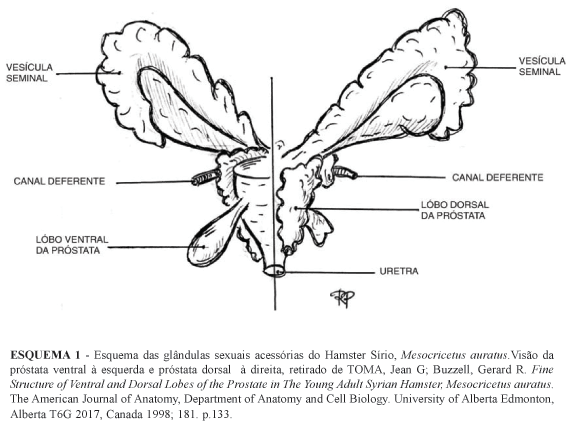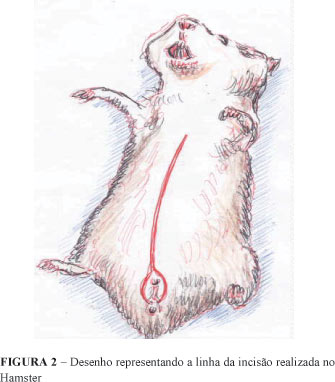Purpose: To explain the available technique in collecting blood for PSA (Prostate Specific Antigen) dosing and the genitourinary system extracting from Syrian Hamster, Mesocricetus auratus, and correspond PSA findings to anexed sexual histologic changes. Methods: Thirty (n=30) Hamsters were used in the experiment: ten (n=10) animals were on the average age of 47,5 days on the decease mourent, being qualified as young and twenty ( n=20) animals over the age of one year were qualified as adults. After being under chetamina cloridate and diazepam anesthesia, on the superior abdomen level, c. 1,5mL to 2,0mL of blood were collected for total PSA dosing though ELISA method, with human antigen. They died after blood extracting. After verifying the animal death, laparatomy was carried out, extracting in complete monoblock the genitourinary system for a histologic study of sexual anexes. A PSA correlation was set with the found histologic changes. Results: An excellent anesthesian plan was obtained after shooting chetamina cloridate and diazepam intraperitoneum on the animals, that made possible to collect blood through the cava vein trans-derm via to the superior abdomen for the PSA dosing. The animal died after blood collecting. Laparatomy was carried out with the complete monoblock extracting of the genitourinary system for a histologic study of sexual anexes and found changes to dosed PSA. Among young Hamsters the PSA found level was 0,252ng/mL, Pattern change (PC) = 0,36. Among adult Hamsters, the average was 0,325ng/mL, (PC)=0,12. When comparing these PSA averages between the young and adult groups, the obtained result was p= 0.0427. Among young Hamsters, three of them presented PSA no detectable and young animals did not present histologic changes in their checked sexual annexes, among adult Hamsters, fourteen (70) of them presented change in their sexual annexes such as: ten (50%) present only PBH (Prostate Benign Hiperplasia), one (5%) prostatitis and seminal vesicle inflammation and PBH, one (5%) seminal vesicle suppurative inflammation, one (5%) seminal vesicle inflammation and one (5%) presented testicle infarct and prostatitis. Conclusion: The depicted surgical technique has shown to be efficient in obtaining the genitourinary system with its organs and structures, even for a histologic study of those organs and PSA dosing in Syrian Hamster, Mesocricetus auratus.
Mesocricetus; Prostate-Specific Antigen; Seminal Vesicles; Testis






